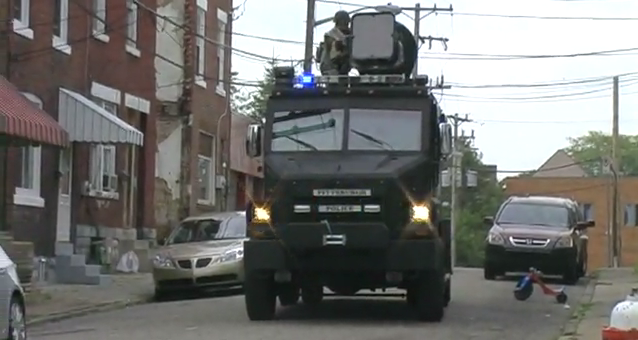The Sound Cannon is a type of Long Range Acoustic Device (LRAD) that is now being used by authorities in multiple cities at events across the country to disperse protesters in unwarranted areas.
This machine has sparked significant controversy as the opposition has claimed it can cause permanent hearing loss, and in more severe cases, fatal aneurysms. The device emits up to 150 decibels of sound in a 30 degree arc with a reach radius of 1 km (about 1.6 miles).
Last week, Sergei Kochkin, Ph.D, Executive Director of the Better Hearing Institute (BHI) expressed his concern about the use of this agent. “The human threshold for pain is between 110 and 120 decibels,” he said. “Any exposure to the device at its maximum power could cause irreversible damage to the ears since the sound exceeds that of a jet engine taking off or a gun shot near a person’s ear. In addition, it can result in debilitating tinnitus (ringing in the ears).”
The US Navy has reportedly used similar devices to deter pirates off the coast of Somalia, and on land, the sound cannon has been used militarily in Iraq. The apparatus was first used in the states at the G20 summit in Pittsburgh in 2009. One woman who participated in the protests actually sued the city, claiming she suffered hearing loss after being hit with the sound.
A lively fire has re-sparked the controversy in recent weeks, as the device is set to be implemented at the upcoming London Olympic games and a number of other events in US cities.
The opposition is coming from protesters, backed by hype from the media, and the people show no signs of slowing. Considering our business, we’re forced to wonder why city officials and law enforcement aren’t employing the use of safer crowd control equipment like CrowdStopper Barricades or other outdoor systems.
We’re not saying that outdoor crowd control standing on its own is a viable alternative to this LRAD equipment. What we are saying, however, is that fleets of officers in full riot gear, in tandem with safe outdoor crowd control, can be completely effective as a preemptive measure against social unrest.
Further, our biggest problem with the entire dispute, is the use of the word “weapon.” The term “crowd control” should never be associated with violence, when the true purpose of the equipment and its application is to prevent violence.
While proponents will argue it is completely safe, and often used simply to communicate messages to people from afar, the fact remains that the machine can cause physical damage to pedestrians, and the media is referring to it as a “less-than-lethal crowd control weapon.”

